When it comes to Nordic walking, not all poles are alike. But which ones are best? In this article we’ll take a look at the types of poles available and which of those may be best suited to your needs. At the end of the post I’ll give my personal preference.
An investment in your health
In my opinion, buying a pair of walking poles is one of the single best things that you can do to increase the effectiveness of your walk. Most of my clients very quickly decide to invest in their own set of poles. This inevitably leads them to ask me which poles they should buy. My answer is, like most things in life, it depends. Below I’ve laid out the different types of pole, various features and some of the pros and cons that I’ve noticed over my years as a Nordic walking instructor.
Pole selection
Fixed length
A fixed length pole is a one piece pole that comes in a range of sizes. This pole is the least likely to cause vibration as it has one complete shaft with no joins. You should be confident in your technique before purchasing fixed poles as there is no wiggle room to adjust the height as your technique improves.
Pros:
- Extremely low risk of vibration
- Plenty of choice on the market
- Less expensive options available
Cons:
- No room to adapt the pole as your technique improves
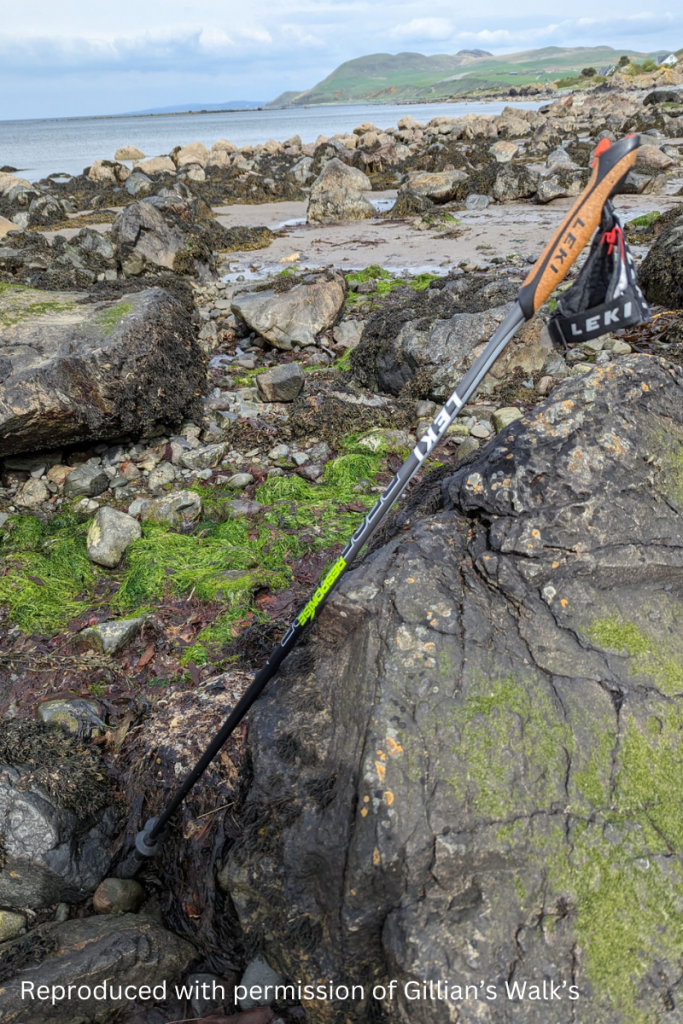
Extendable
An extendable pole has a 10cm range of adjustment near the handle. This is said to cut down on vibration and essentially makes the pole feel more like a fixed pole yet still being adjustable to the perfect height for the walker.
Pros:
- Sturdier than a fully adjustable pole
- Height adjustable
- Reduced risk of vibration
- Lightweight poles
Cons:
- Not readily available on the market
- Tend to be at the top of the pole price range
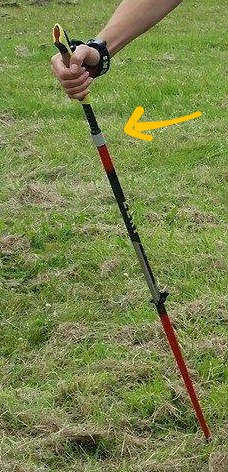
Fully adjustable
A fully adjustable pole is the most common choice for instructors as it has the most adaptability to suit a range of client heights, therefore, these are the poles you are most likely to use if you join a group. New Nordic walkers may benefit from fully adjustable poles over fixed poles so that they can tweak their pole height as technique improves.
Pros:
- Readily available
- Height adjustable
- Less expensive options available on the market
- Clamp lock (speed lock) options for people with grip issues
Cons:
- More chance of vibration
- Risk of join failure on heavy duty use or consistent heavy propelling, especially speed lock types
Travel
A travel pole, also known as telescopic, is best for those who need a space-saver pole. A travel pole typically breaks down into 3 shorter sections. It’s worth noting that a travel pole has 2 adjustment points, leaving the pole more at risk of vibration, especially in a cheaper pole.
Pros:
- Great option to fit into luggage
- Clamp lock (speed lock) options available for those with weak grip
Cons:
- Vibration possible in a low to mid-range pole
- Low vibration travel poles tend to be at the top of the pole price range
- Risk of join failure on heavy duty use or consistent heavy propelling, especially speed lock types
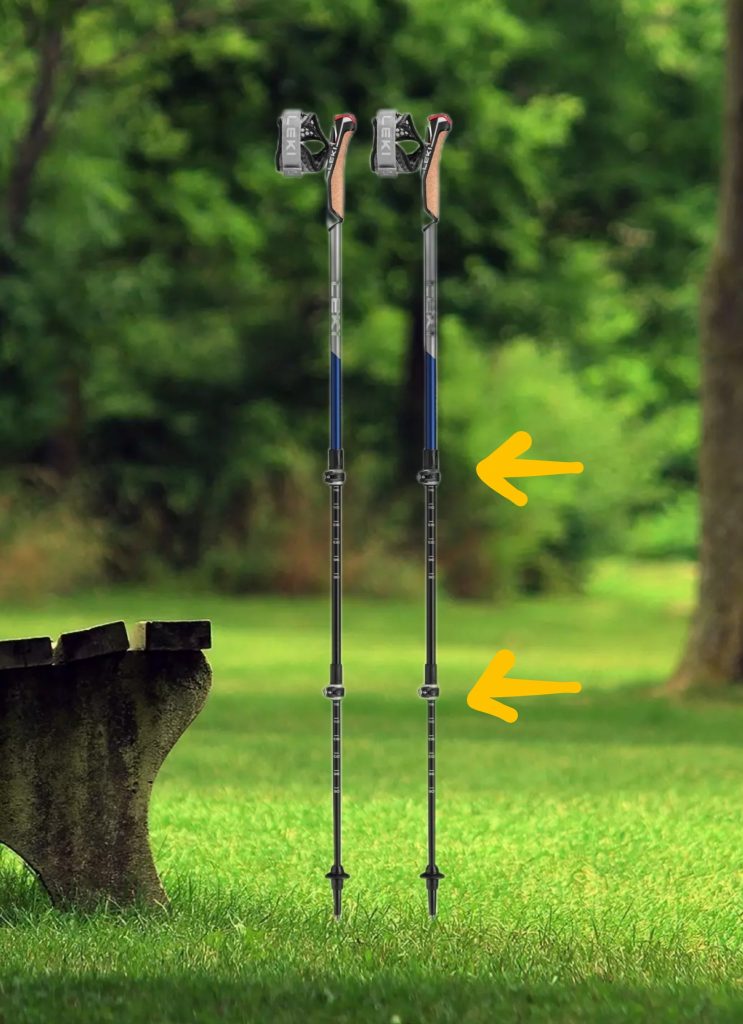
Strapless
Strapless poles are designed to benefit walkers who prefer additional balance support or don’t wish to be attached to a pole for fear of falling and causing injury to the wrists.
In my experience most walkers who start with these poles quickly move onto the strapped poles once the pushing technique has been learned. However, a handful of my clients prefer to stick with strapless, particularly those requiring extra support for balance.
Pros:
- Shorter learning curve
- Ledge handle gives a larger area for the edge of the hand to come into contact with
- Walker is much more likely to feel the muscle recruitment during the ‘push’
- More supportive for balance
- Offer increased joint support up or down hill
- Button lock in some models is helpful for those with a weak grip
- A range of rubber tips or are available, including boot or bell shaped ones for greater stability
Cons:
- A heavier pole
- Thicker handles may cause over-gripping, leading to less effective technique
- Less upper body muscle recruitment than a strapped pole
- Less able to generate propulsion and speed

Trekking
Due to the different design and function, trekking poles are not suitable for Nordic walking. The main difference is that they lack the necessary glove-like strap (or ledge of the strapless pole) to allow the walker to propel themselves forward using the upper body. They tend to be less streamlined than a Nordic walking pole and don’t have the angled tip necessary for improved propulsion.
Pros:
- Provide additional balance
- Offer joint support up or down hill
- Widely available
- Many are suitable for travel
Cons
- No means for propulsion, therefore, not suitable for Nordic walking
- Retailers will sometimes mistakenly sell trekking poles as Nordic walking poles
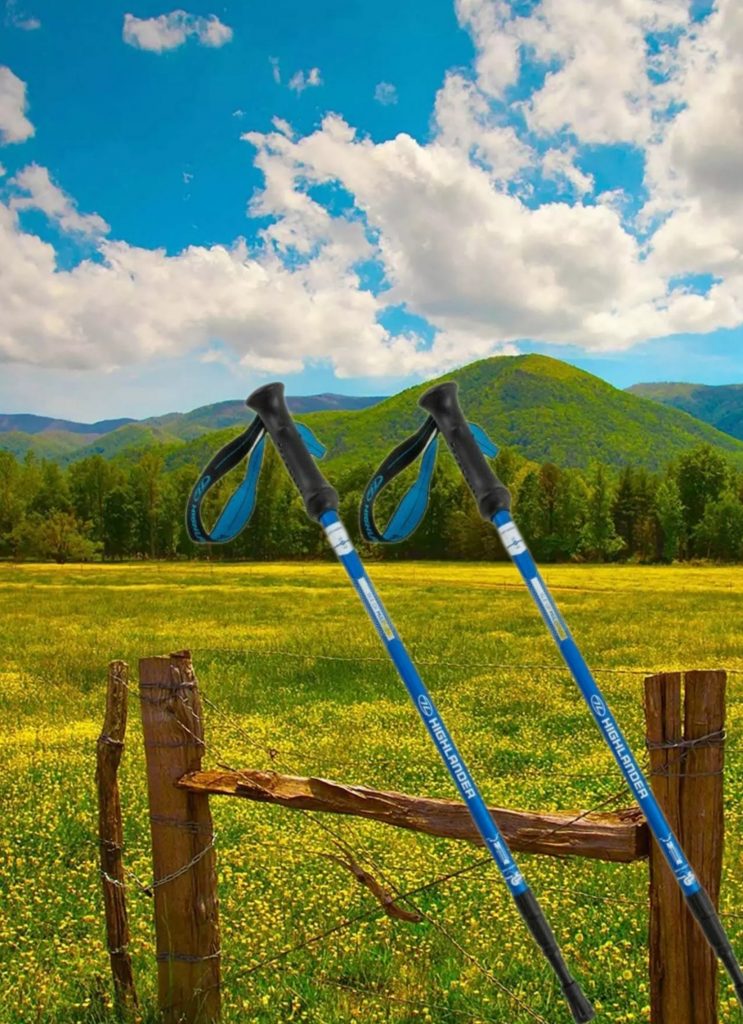
Some other things to consider when choosing a walking pole
When it comes to buying your own poles there are a few things to consider.
Where possible, always go for a known make. Choose a company that specialises in pole design, whether it be ski, trekking, trail running or Nordic walking, they tend to have researched what makes a good pole and have refined their designs based on customer feedback over many years. You won’t go wrong with makes such as Leki, Gabel or Fizan. For strapless poles there are fewer choices. Urban Poling’s Urban and Activator poles are good choices and Nordic Walking UK have now released their own range.
If you decide to go for a strapped pole, make sure that it has a glove-like Nordic walking strap as opposed to the looped strap of a trekking pole. I strongly recommend a detachable strap. This makes it much easier to unclip when you need to in a hurry (runny nose anyone?).
The thickness of the handle can often dictate how comfortable we feel when holding a pole. A thicker handle or heavier pole can sometimes lead to over-gripping which can cause neck tension. I recommend opting for a nice sleek handle and a fairly lightweight pole where possible. If you require poles for balance support then please consider opting for the strapless pole regardless of the thicker handle.
Carbon poles are very lightweight but expensive. A carbon aluminium composite pole can offer a good alternative whilst being more cost effective. A fully aluminium pole will be the most cost effective and still do the job but will be slightly heavier.
If you suffer from a weak grip or painful hands or wrists, you may benefit from a speed lock adjustment, which is simply a clamp mechanism, as opposed to a twist lock, which can be a bit stiff.
Make sure your poles are sold with rubber tips, which are particularly useful on smooth tarmac surfaces. If you intend to use the poles to focus on upper body muscle recruitment or walking at speed then make sure that the rubber tips are angled for maximum propulsion. Some poles come with retractable tips that are attached to the pole and can be slid up and down as required, as demonstrated in the Leki Smart Supreme. Whilst handy, these can become stiff or jammed over time if not maintained well.
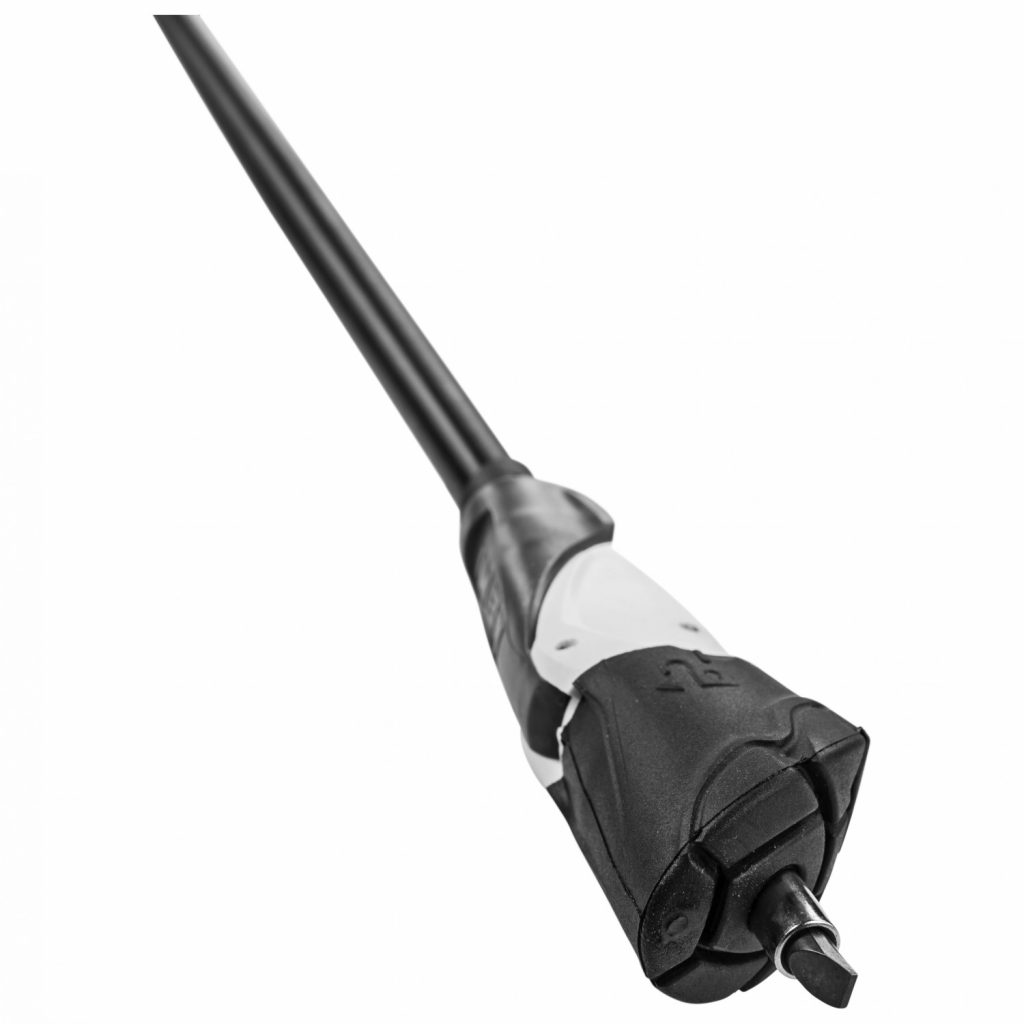
Walking poles come in a wide range of prices. For a good quality, reliable pole, you should expect to pay anywhere between £50 and £100, any higher isn’t necessary in my opinion unless you are an instructor, heavy duty walker, trail runner or looking for a top quality travelling pole. If budget is a barrier then opt for the best pole you can afford and do shop around as deals often come up. If you cannot afford to splash out on your own set of poles then try to find a local Nordic walking group who will have poles that you can borrow as part of their sessions. If you need advice on this then please do contact me!
How to adjust the height of your poles
British Nordic Walking says that a good guide to pole length is to take your height in cms and multiply it by 0.68, then round down to the nearest cm. Another useful guide, this time from Nordic Walking UK, is that your arm should have a bend at the elbow of slightly more than 90o. You can imagine a drop of water being able to slowly run from your elbow to wrist. This can vary from person to person based on body dimensions so it is always advisable to take the advice of an experienced instructor prior to purchasing your poles. You should be mindful that as your technique changes so too might your ideal pole height!
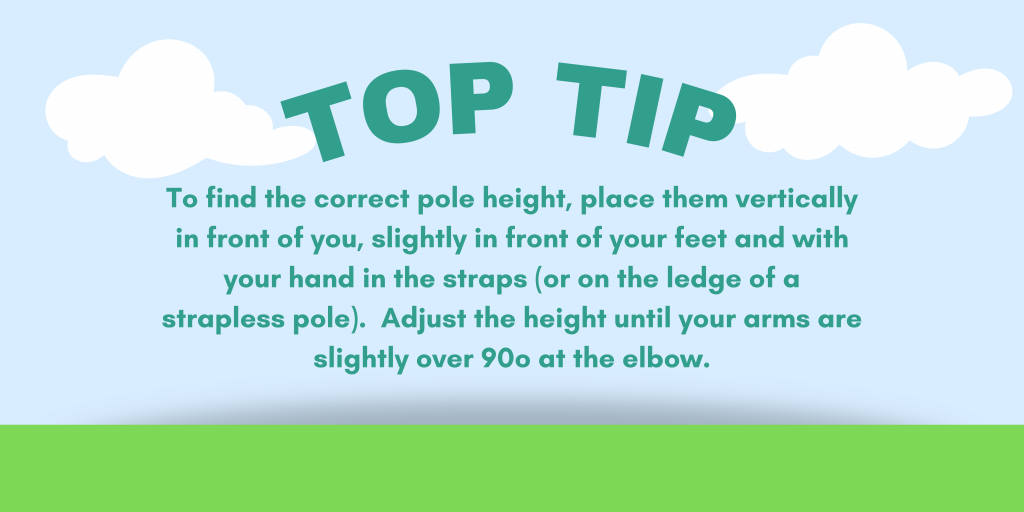
My personal preference
I’ve been a Nordic walking instructor for over a decade, using my poles up to 4 times per week. I have put them through their paces and in all honesty have been less than fastidious about maintenance! Even so, as of writing this blog, I am still using the same pair of poles as on the day I started, which is a testament to their durability. If you’re curious, here’s what I prefer in a pole and why:
- Type – I’ve always used an extendable pole but I would be equally happy with a fixed pole since my technique is unlikely to change.
- Make – I’m a Leki girl. I prefer the shark release that comes with many Leki models.
- Material – I prefer a 100% carbon pole. The lightweight causes very little resistance on my forward arm swing, allowing me to walk more naturally and faster. I seem to carry quite a bit of muscle tension and find that a lighter pole leads to a comparatively relaxed grip and less neck and shoulder tension.
- Strap – I prefer the Leki Shark release system, it feels more comfortable in my hand and is quick release.
- Lock – On an adjustable pole, I prefer the twist lock to the speed lock. It feels much more secure to me when I’m doing a higher intensity interval and pushing hard through the pole.
- Tips – I walk routes where the terrain can change from minute to minute so prefer to walk without the rubber tips. I like a carbide tip for extra grip and durability. I like the speed tip for better resistance.
- Current pole – My own poles are the discontinued Leki Speed Pacer HM Carbon. Apart from the cork now peeling off of the handles, they are as good as the day I bought them. I’m loathed to part with them!
My recommendation
My current high end top pick is the Leki Speed Pacer Vario. This fully carbon, extendable pole with shark system release is extremely lightweight with room for adjustment.
My current low to mid-range top picks are the carbon/aluminium composite pole Gabel Stretch Carbon or the fully aluminium Leki Spin, Gabel Stretch Lite or Fizan Carbon Pro.
For strapless poles, my current picks are the Urban Series 300 or Urban Activator poles.
Contact me
If you would like to learn more about Nordic walking, please feel free to contact me.


What do you think of shocks in trekking poles? Black Diamond at REI offers a model. (Use case: 3K foot descent, with arthritic knees).
I am also curious for hiking if I’d like the Nordic strap around my wrist. (My go-to is the super-lightweight foldable Black Diamond blue & black poles, but I have broken one coming down a steep off-trail pass, so those work best on the standard maintained trails). I am always game to find that “next thing” if it makes the descents have less impact on my knees.
TY for having compiled this list of recommendations
Hi, I’m so glad you found the blog useful.
I’m afraid I don’t use trekking poles so I haven’t come across poles with shock absorber capabilities. That said, my feeling would be that the shock absorption will perhaps benefit the wrists and possibly elbows and shoulders but will likely have little effect over the knee. I know you didn’t ask for help with your knees but if it does help I always recommend glute strengthening exercises to my knee pain clients. Strong glutes help prevent stress at the knee. An imbalance at the feet and ankles can also be a factor. Feel free to have a look at my YouTube channel where you’ll find some useful exercises – https://www.youtube.com/@WalkFitter.
The Nordic walking strap is typically used for fitness walking where you are looking for propulsion over stability. My advice for hiking would be to stick to a strapless pole where you are most likely looking for stability, particularly on the decent. A pole with a ledge on the handle is great for stability, and by pushing the hand down on to the ledge you use your upper body to take some stress out of the lower body. I have my clients do ‘hill drills’ where there is a notable difference on the knees with and without the poles.
I hope this has been helpful and good luck with your 3k descent!